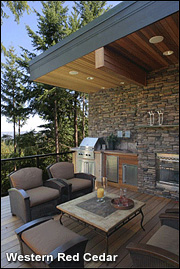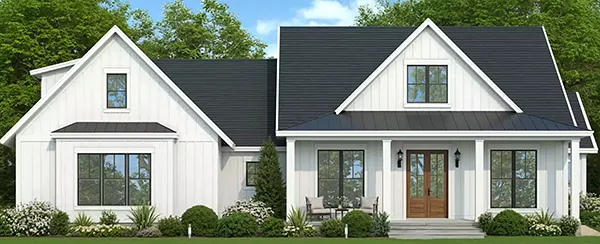Outdoor Retreat

Turning your backyard into an outdoor living retreat is one of the hottest trends among homeowners, who are looking for a place to escape from their busy weekdays.
Creating a truly relaxing setting will take some planning, but in the end your deck will become a favorite spot for you and your family and friends to enjoy.
When you start to design your outdoor retreat, be sure to consider the following:
Layout
It all begins with knowing the activities you'd like to include on the deck. How much area is needed to comfortably accommodate every activity? The average size deck is 300 to 400 square feet, and the more activities you add to enjoy the outdoor experience, the larger deck required.
Having those activities in mind can help you divide the deck into different zones - one for the grill, one for the hot tub, one for a sitting area, etc. You may want to consider giving each zone its own level. Levels are a great way to define areas -- a few steps up or down gives the allusion you've entered a new space.
Another way to distinguish deck areas is to change the deck board direction; an angle change or unique board pattern provides the subtle indication that you're in a separate deck area.
Traffic flow affects the usability of your deck. It's all about remembering the practical realities. For example, dining areas require extra space. Grilling areas should be close to the kitchen so you're not shuttling things back and forth more than necessary. If you want to include a conversation area with a warm fireplace for people to gather, making sure you have enough room to move around safely and comfortably.
Weather conditions can also impact layout. If you need protection from the beating rays of the sun or protection from the wind, a sheltered spot under a canopy of trees might be sensible. Or, consider building an arbor or roof over the dining area to create more of an indoor feeling and a transition to the outdoor setting.
When choosing a grilling area location, think about the prevailing winds and pick a spot where the smoke blows away from the guests and cook. And try not to isolate the grill, as this is a common gathering area for pre-meal conversations.
Decking materials
One great way to make a seamless transition between the indoors and outdoors is by incorporating a decking material that gives the impression it is an extension of the room inside. This can be done through the right selection of color and material.
While a number of imitation products have hit the market in recent years, all-natural Western Red Cedar remains one of the most widely favored and versatile decking materials. Many people choose western red cedar due to its aesthetic appeal and physical properties. For centuries, cedar has been known for its exceptional beauty, versatility and longevity. Cedar brings an exceptional all-natural look, aroma and character to outdoor spaces.
"Natural qualities of Western Red Cedar make it an excellent choice for a wide range of building projects both inside the home and outside the home," said Peter Lang, general manager of the Western Red Cedar Lumber Association. "It is one of the most environmentally-friendly building materials you can use. It's naturally durable without the need for chemical treatment, dimensionally stable, resilient, and lightweight — unlike some plastic or imitation wood products."
Decorating
Placing some furniture just outside the main deck entrance provides a smooth segue between spaces and invites guests to move freely between the indoors and outdoors. Choose cushioned fabrics to visually tie the interior and exterior together for a cohesive look.
Built-in benches add both style and function to your deck. They make a great way to capitalize on longer stretches of decking with unobstructed views. Adding Western Red Cedar planter boxes at select locations can create focal points. You can also add a birdbath to bring another dimension of enjoyment. With the right planning, you'll be able to create an outdoor paradise that will become a welcome respite from the hectic pace of everyday life.
For more information on building with Western Red Cedar, visit www.wrcla.org.



.png)
.png)



